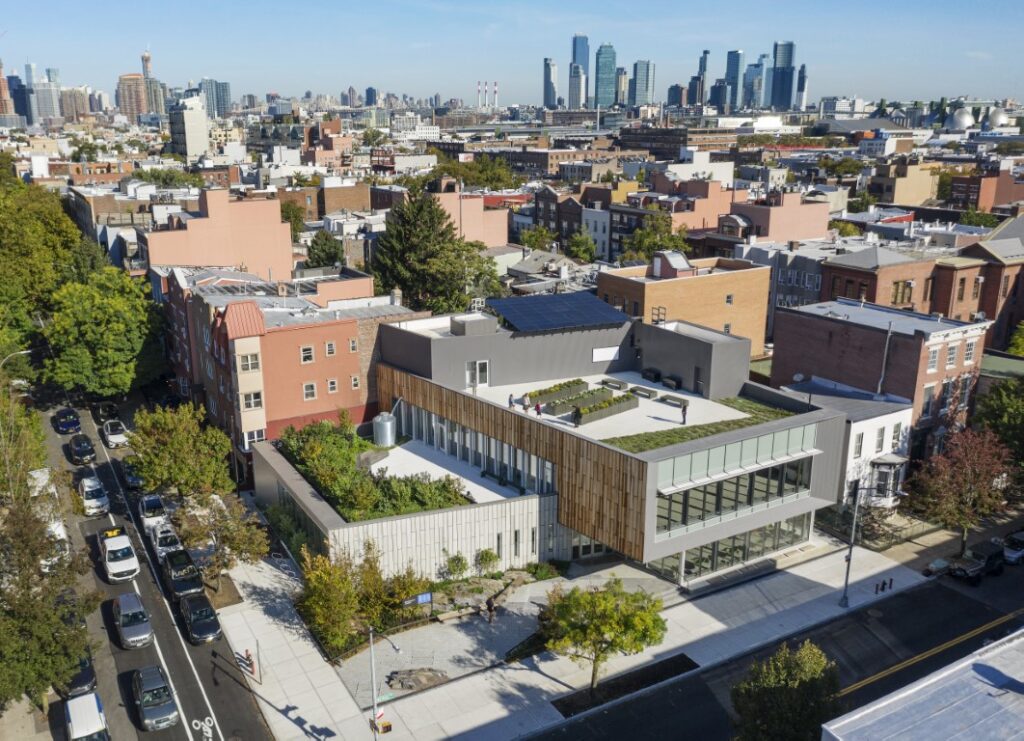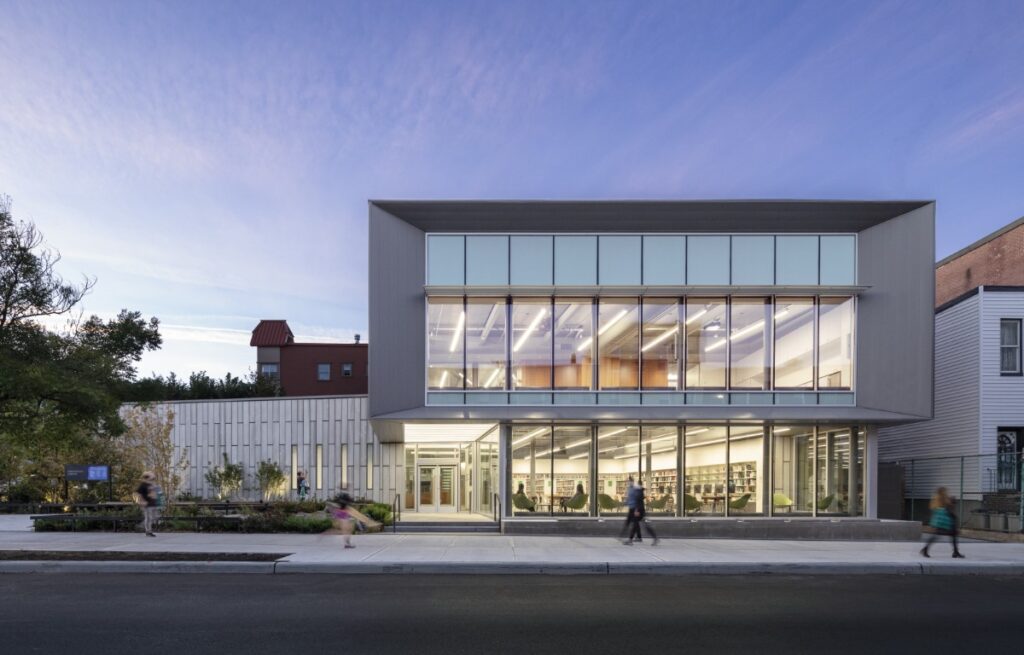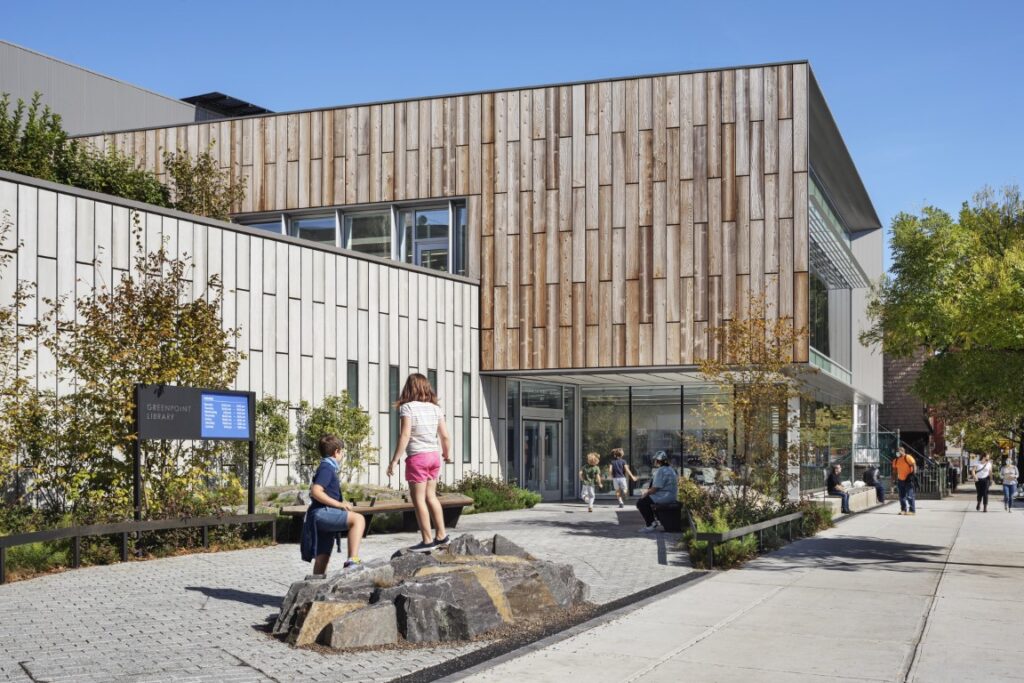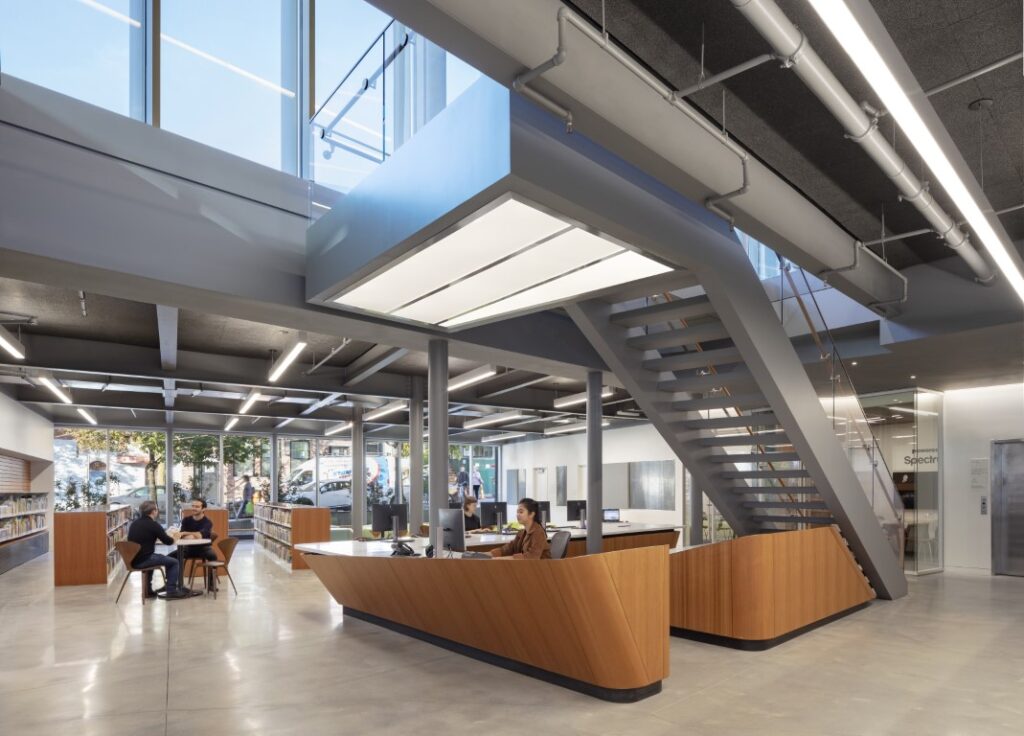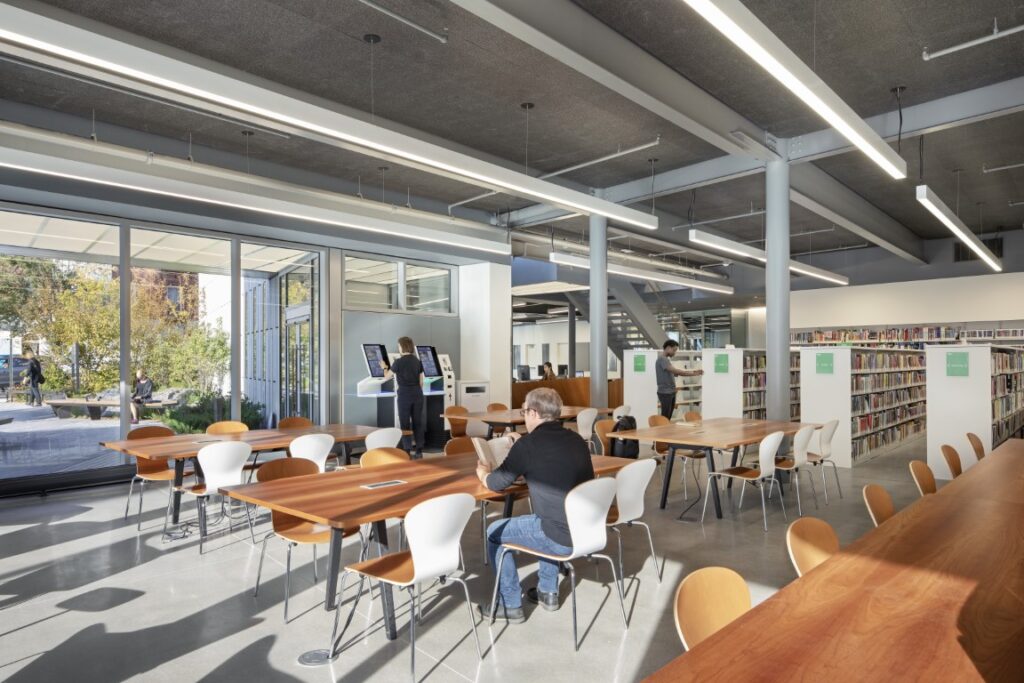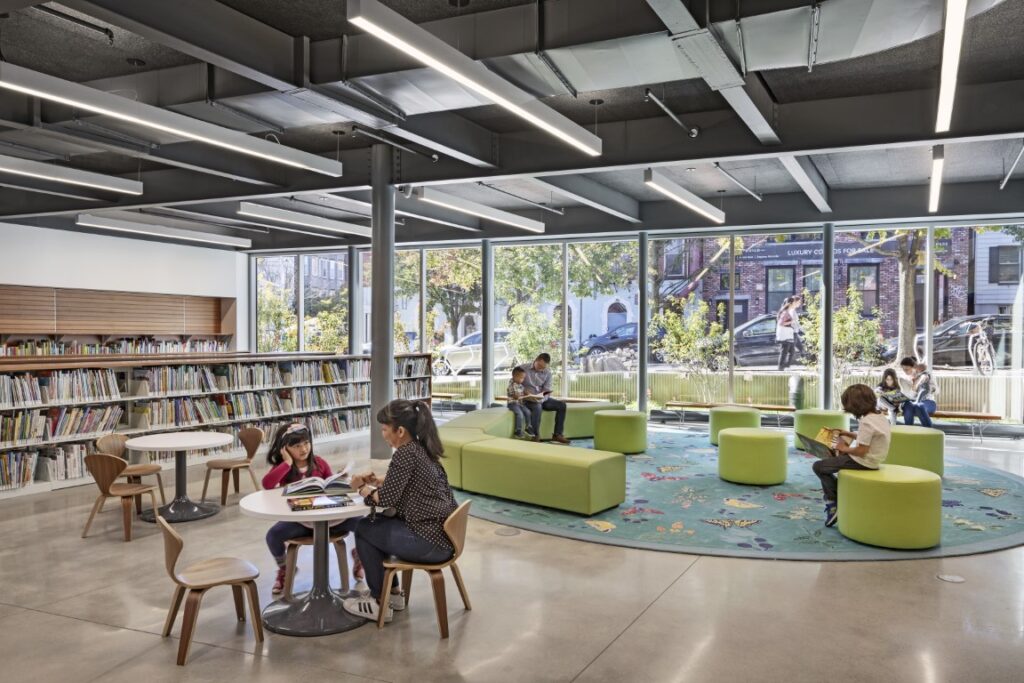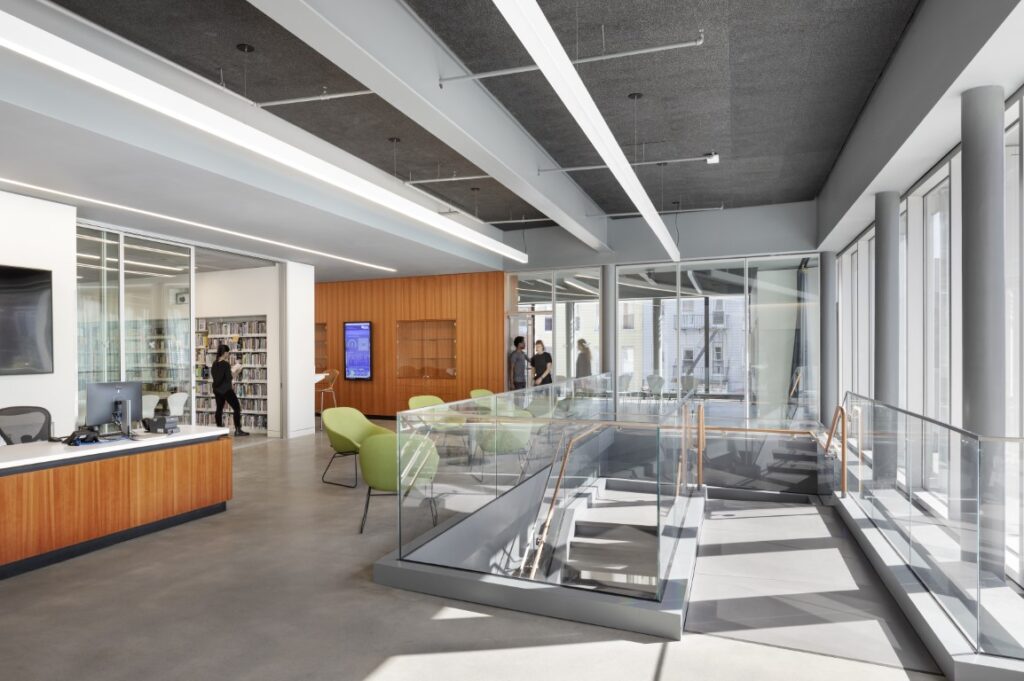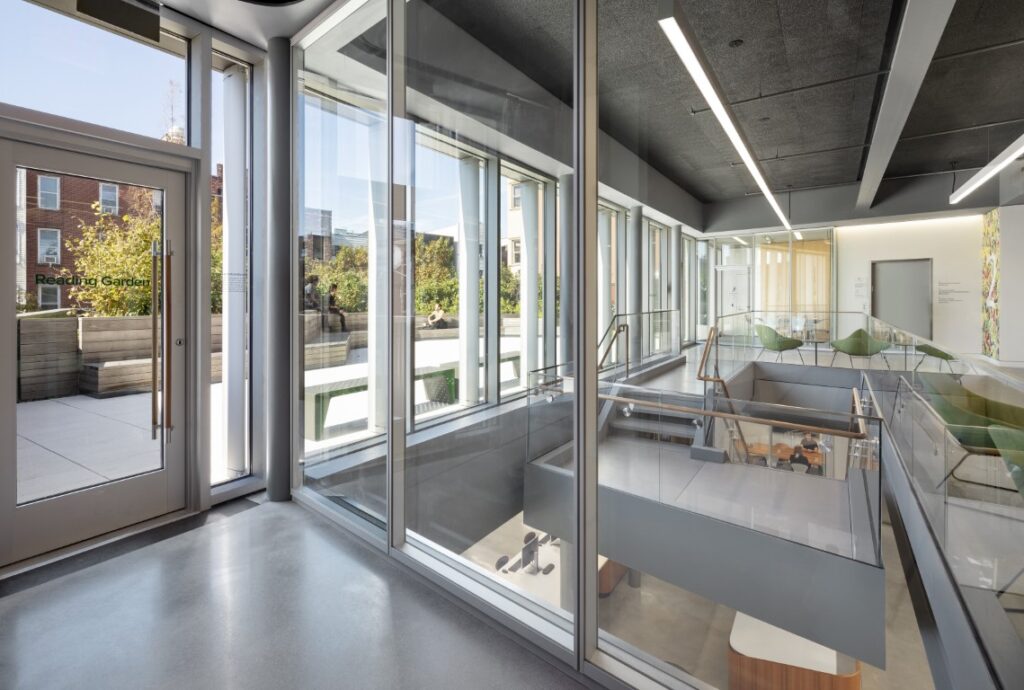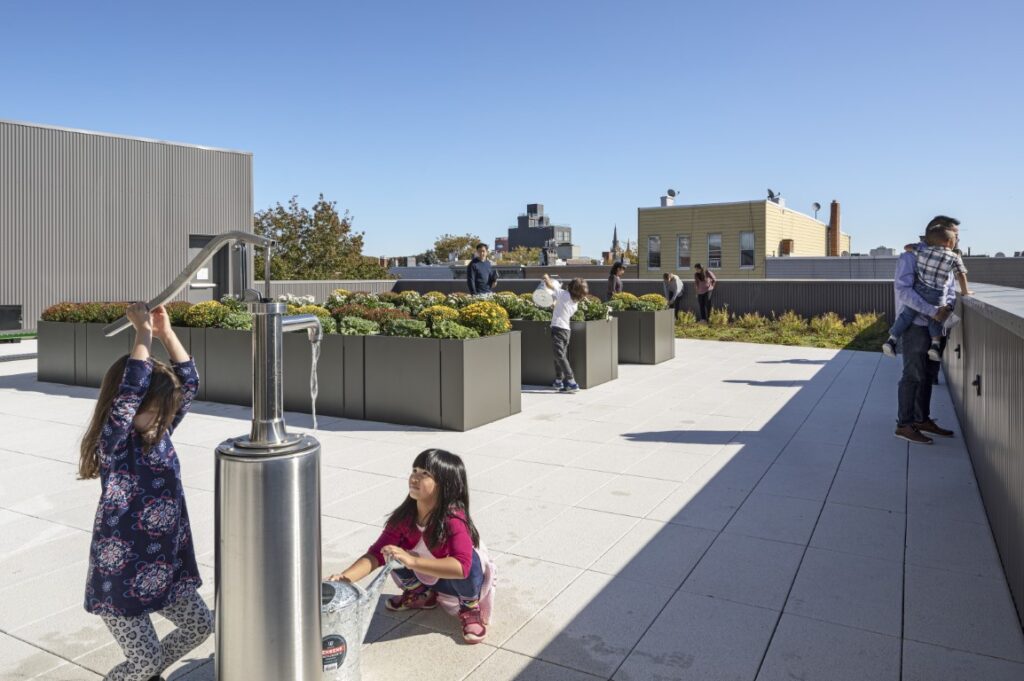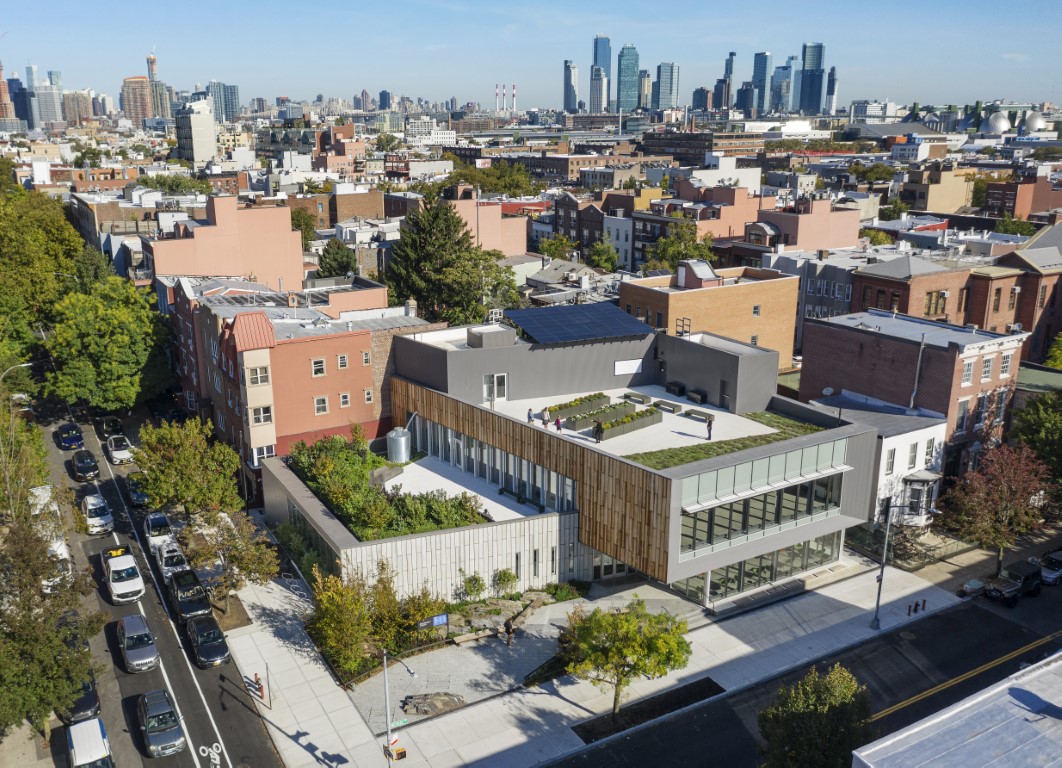Architects: Marble Fairbanks Architects
Area: 15,256 ft²
Country: Brooklyn, New York
Year: 2020
Photographer: Michael Moran/OTTO
Text description and images are provided by the architects.
The Greenpoint Library and Environmental Education Center is one of fifty-eight neighborhood libraries that make up the Brooklyn Public Library (BPL) system. Funded in part from a Legacy Grant from the Greenpoint Community Environmental Fund, this project is the result of active engagement between BPL and the community. By partnering with local environmental groups, the library offers residents the opportunity to learn about Greenpoint’s rich history and its specific ecological context. Many of those environmental groups are represented on the Community Advisory Committee, which acted as an integral participant in the inclusive design process.
BPL is committed to supporting this uniquely expanded branch library with the ambition “to create environmental stewards and nature lovers out of future generations of New Yorkers.” Moments that highlight environmental awareness are integrated throughout the building’s interior and exterior.
The design doubles the size of the previous building, providing enlarged indoor and outdoor spaces to house expanded activities related to the exploration of the environment as well as everyday library use. The primary program elements are adult, young adult, and children reading rooms collection spaces, and community spaces. The landscape supports native plants, attracts birds and pollinators, and encourages a local natural ecosystem. Building systems, unique features such as solar windows aligned with the equinoxes and solstices, and local materials are noted throughout the interiors.
The primary exterior building materials include custom sandblasted wood panels on the upper level and custom cast concrete on the lower level–the concrete panels were cast from the wood—revealing textures and patterns of the wood grain. The wood will weather and begin to match the concrete in color, changing its appearance over time.
The building exceeds required LEED goals and is a demonstration project for innovative approaches to sustainable design and a learning tool for the community.
VIEW GALLERY
